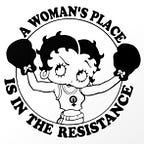First they killed my father (2017), de Angelina Jolie
During his short and disastrous presidency, Richard Nixon, among other things, ordered an invasion of Cambodia, a little neutral Asian country, in order to “help the Cambodians to help themselves”.
With the North American bombs and the consequent destruction of many areas, a communist-oriented party called Khmer Rouge saw it as a perfect opportunity to become stronger and take several cities. Desperate, without a thing to lose and nothing more to fear, thousands who had their lives destroyed by the American invasion joined the Khmer Rouge and believed in the promise of a new Cambodia, without social classes or inequality.
The film starts with archive footage and newspaper footage, from both the US and France, in a brief introduction about the Khmer Rouge. Then, the Khmer Rouge invades the city in which Loung, her parents and her five siblings live. They are forced to leave their home, drive and walk until they reach a village, where they will grow food for the Angkar — the entity that represents the Khmer Rouge. And, yes, this is a real story.
The sequence in which the family leaves the town is silent, with no background music, the way a hopeless escape should be. We learn, even from movie musicals, that it’s not proper to have music when the world is falling apart. And this silence is what makes a good portion of the film even more devastating.
The most famous movie about the Khmer Rouge is, without a doubt, “The Killing Fields” (1984). It is, however, a film that has two points of view: the point of view of an American journalist, played by Sam Waterston, and the point of view of a Cambodian journalist and translator, played by Hain S. Ngor, the second non-professional actor to win the Best Supporting Actor Oscar. They are two very different people united by tragedy, but this doesn’t come close to seeing a child going through the same horror.
The violence seen through the eyes of a child is less shocking, because usually the child doesn’t understand what is really happening — although she will be traumatized until the end of her life. On the other side, for the viewer this choice makes the story more painful, because we, the adults who know this vile world, know how devastating violence can be.
As a child, Sareum Srey Moch is not exactly an actress. She doesn’t act, she reacts. She has very few lines. We’re the ones who project our feelings in her face. The actress who plays her mother, Sven Socheata, is the one who really conveys emotion and breaks out hearts.
The language spoken throughout the film is khmer, the official language in Cambodia, but a good portion of the movie is silent. Loung’s memories are presented in a very colorful way, contrasting with the dark clothes everybody wears in the village. Angelina Jolie shows how competent she is a director when she succeeds in telling a story with almost only images. Some frames are even inspired, breathtaking, showing a beauty you don’t expect to find in a situation like that.
“First They Killed my Father” is a long movie — more than two hours long, and it won’t be enjoyed by everyone. It is, however, a deep dive in a story we’re not used to listening to, and the opportunity to see what really is “brainwashing” for those who use the term all the time — it doesn’t mean that the film brainwashes us, not at all, but it does have a scene showing brainwashing. And it is, above all, the chance to see that Angelina Jolie is more than Jon Voight’s daughter, Brad Pitt’s ex-wife, Shiloh’s mother, the actress who surgically removed her breasts to avoid breast cancer or a sex symbol with a beautiful mouth. Angelina Jolie is a filmmaker. And a very good one.
